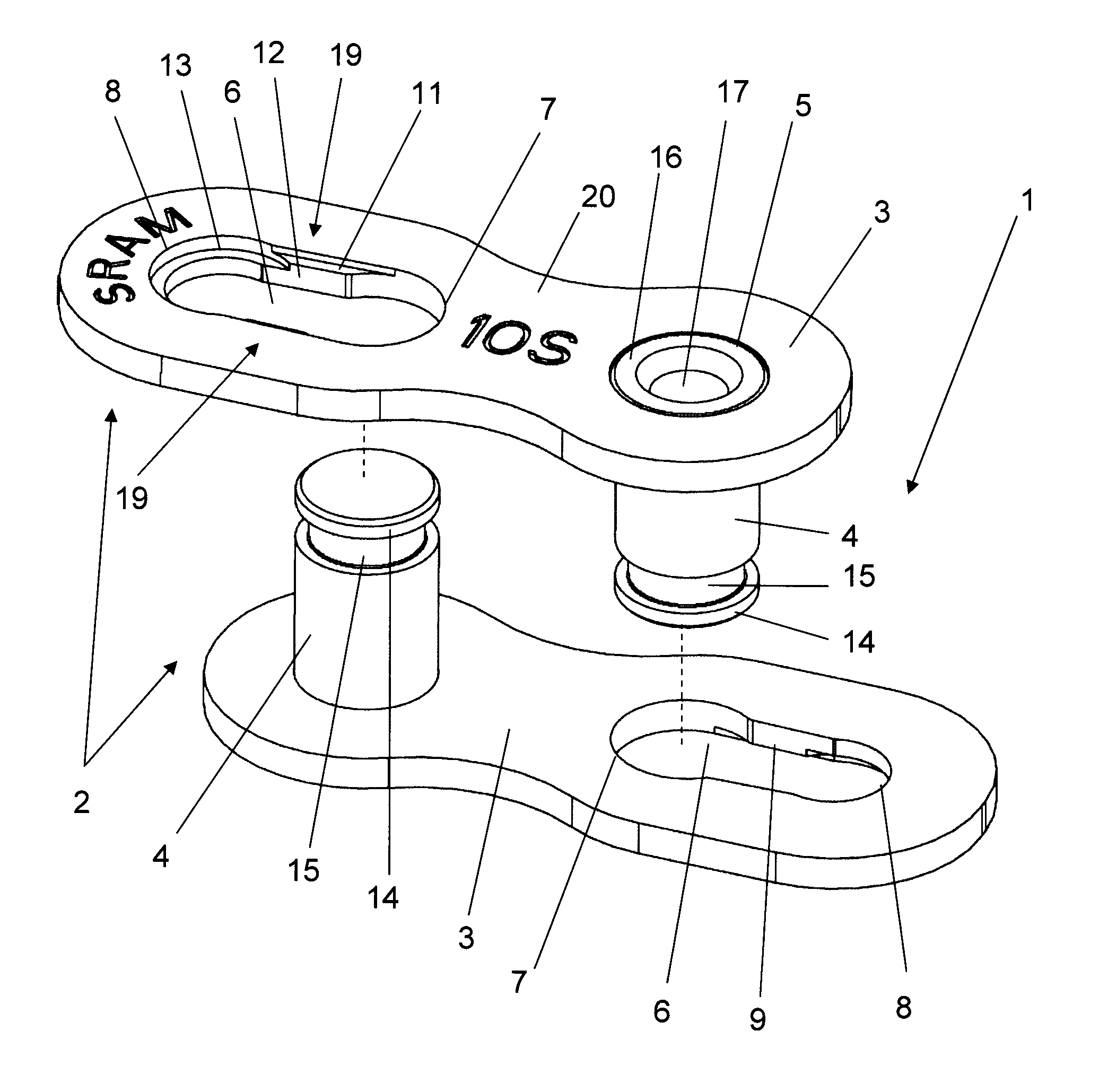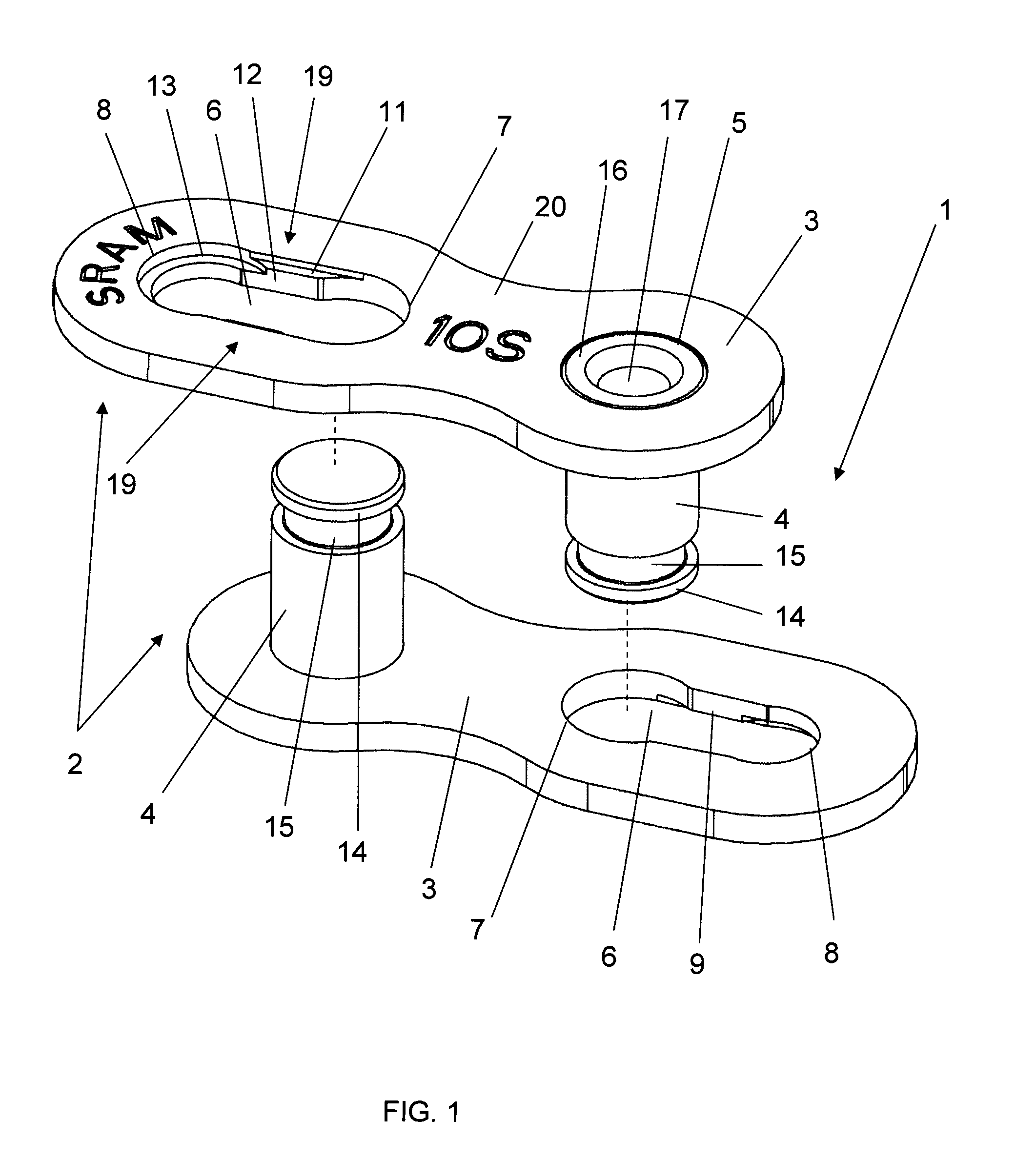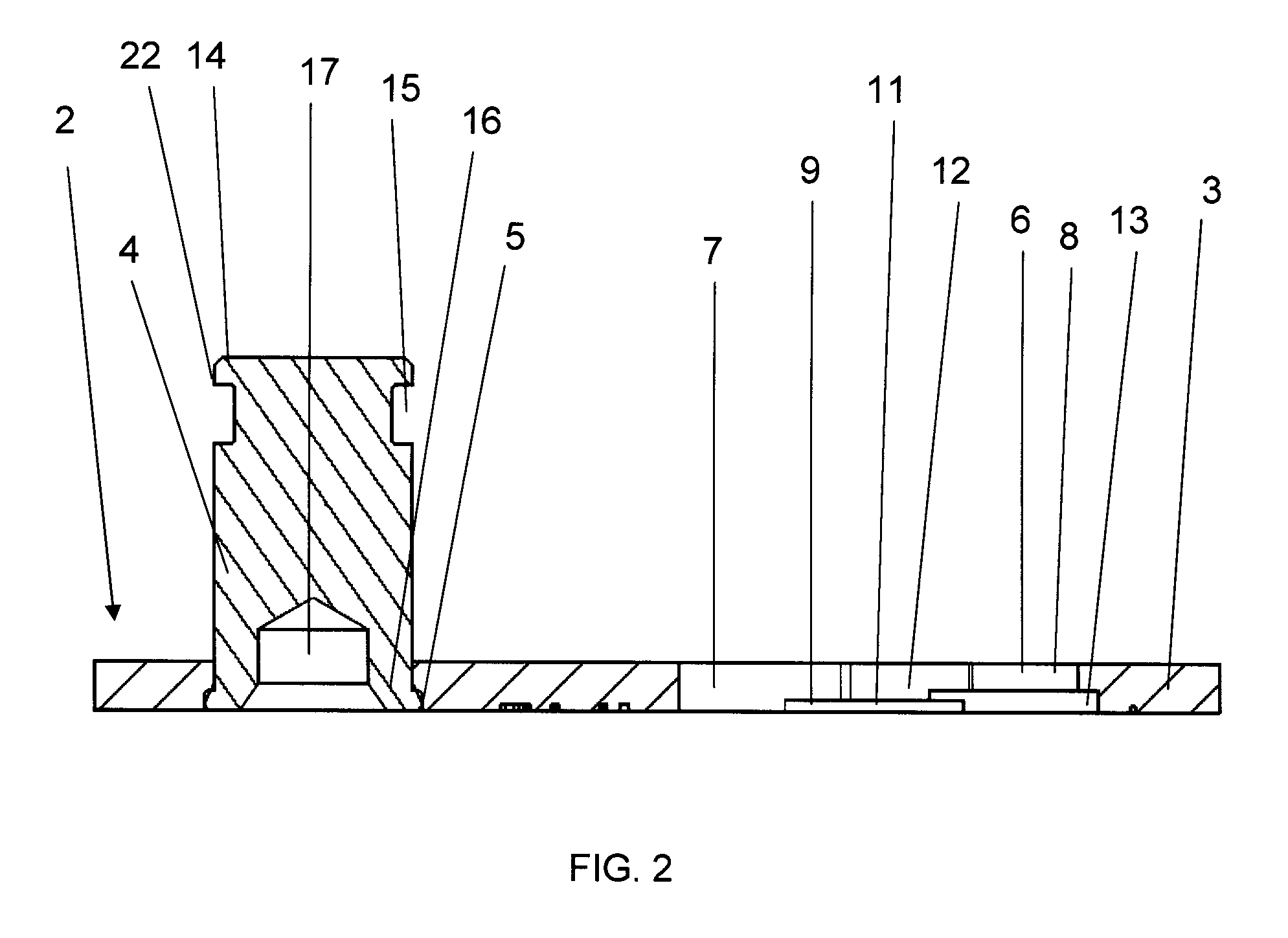Closing link for a bicycle chain
a technology of closing link and chain, which is applied in the direction of chain elements, chains, chains, etc., can solve the problems of derailleurs, pin heads protruding beyond the outer surface of the outer link plate, and adverse effects on the shifting behavior of the chain, so as to reduce the lateral movement of the chain
- Summary
- Abstract
- Description
- Claims
- Application Information
AI Technical Summary
Benefits of technology
Problems solved by technology
Method used
Image
Examples
Embodiment Construction
[0019]FIG. 1 illustrates a closing link 1 according to one embodiment of the present invention. The closing link 1 generally includes two closing parts 2, each including an outer link plate 3 and a chain pin 4 extending therefrom. The outer link plate 3 includes an elongated hole 6. To connect the closing link 1, the chain pins 4 of the closing parts 2 are inserted into the elongated holes 6 of the mating closing part 2.
[0020]The chain pin 4 has a head 14 at one end, a foot 16 at the other end and a groove 15 therebetween. The outer link plate 3 also includes a pin bore 5 for permanent attachment of the pin foot 16. The elongated hole 6 has a larger diameter end 7, a smaller diameter end 8 and a displacement region 9 therebetween. The larger diameter end 7 has a larger diameter than the pin head 14 for receiving the pin head 14 of the mating chain pin. The smaller diameter end 8 has a countersink 13 for seating the pin head 14. The displacement region 9 is the path along which the c...
PUM
 Login to View More
Login to View More Abstract
Description
Claims
Application Information
 Login to View More
Login to View More - R&D
- Intellectual Property
- Life Sciences
- Materials
- Tech Scout
- Unparalleled Data Quality
- Higher Quality Content
- 60% Fewer Hallucinations
Browse by: Latest US Patents, China's latest patents, Technical Efficacy Thesaurus, Application Domain, Technology Topic, Popular Technical Reports.
© 2025 PatSnap. All rights reserved.Legal|Privacy policy|Modern Slavery Act Transparency Statement|Sitemap|About US| Contact US: help@patsnap.com



